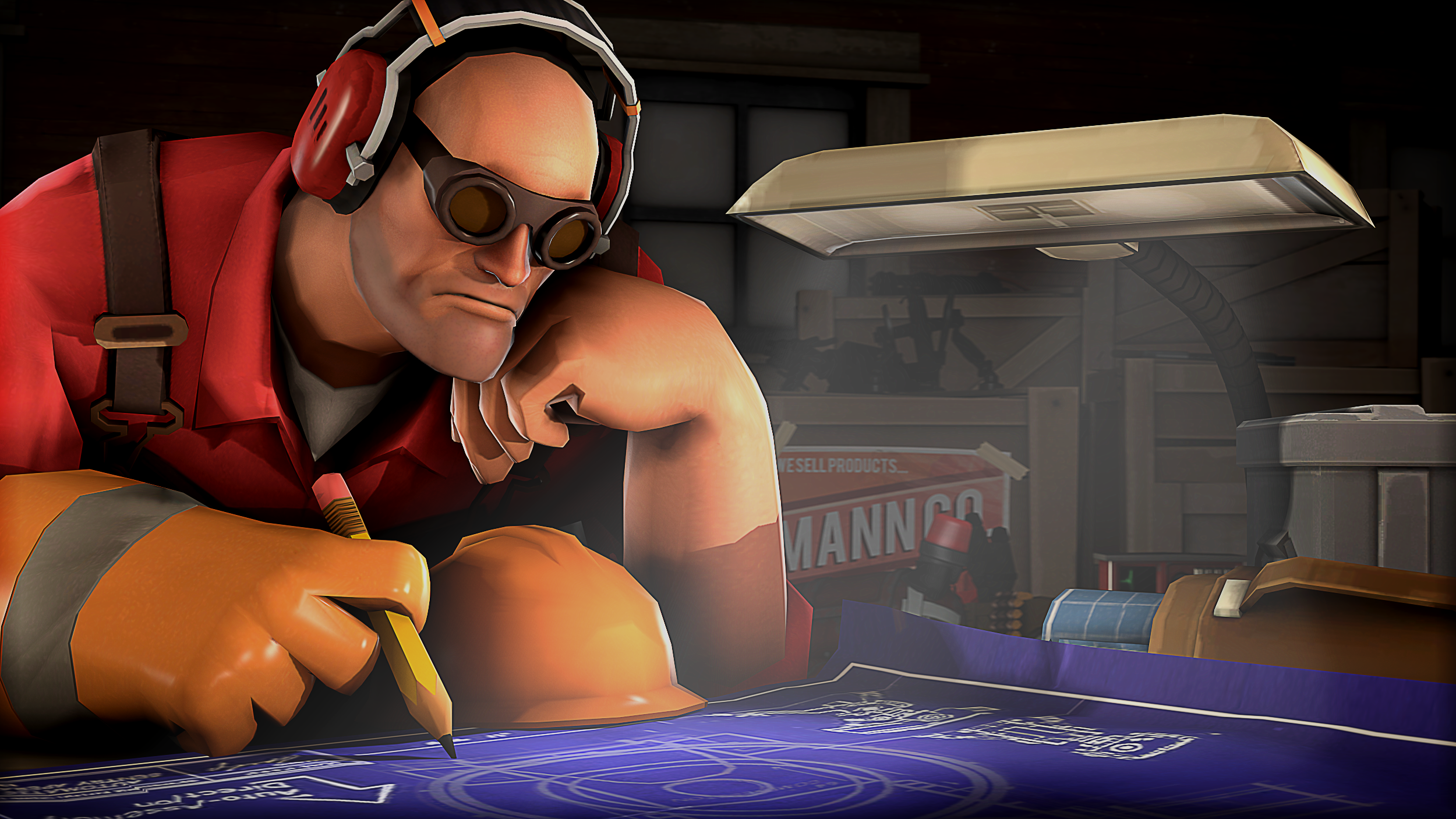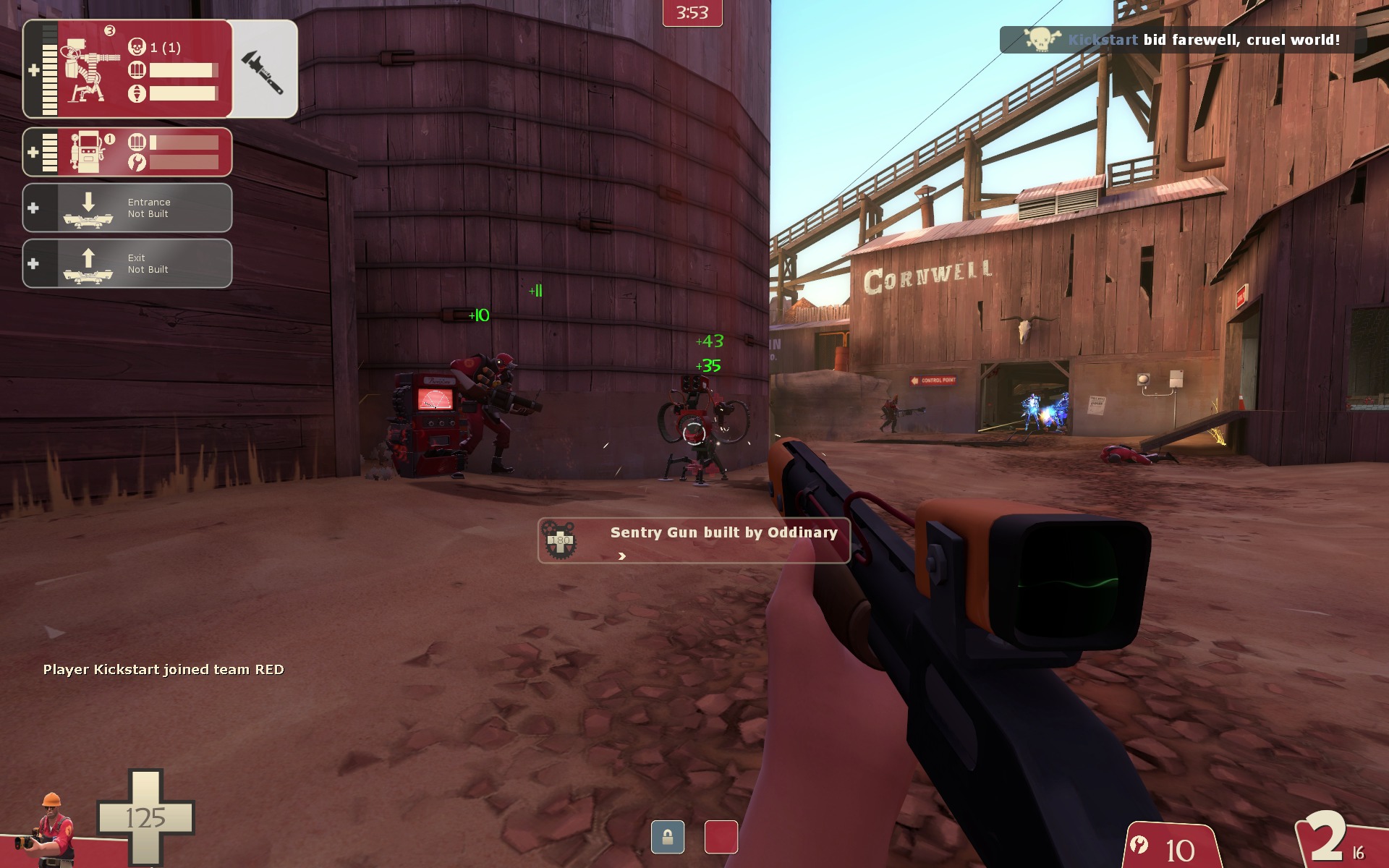How TF2’s latest update changed the Engineer forever

We write about FPSes each week in Triggernometry, a mixture of tips, esports, and a celebration of virtual marksmanship.
When Valve released the massive Gun Mettle update for Team Fortress 2 earlier this month, it was another tally mark in a 500-strong patch dynasty for the everlasting multiplayer FPS. The update’s brought rebalances and tweaks to one of the PC’s most popular games. Most critically, it reinforced Valve’s dedication for making sure TF2’s meta doesn’t languish into mediocrity, a necessary step with competitive matchmaking on the horizon.
Most significantly, the update changed the mechanics of Engineers, TF2’s guitar-twanging, sentry-slinging staple. As the subject of another major overhaul patch back in 2010, the Engie has already seen both subtle and overt adjustments to his gameplay. The addition of the Gunslinger and the ability to pick up and move buildings practically transformed the Engie from immobile turret-babysitter to maneuverable hardpoint, and the increased flexibility between adopting either strategy type to suit the team redefined the class entirely.
Gun Mettle took this a step further by shortening construction, setup, and redeploy times for an effective sentry operator that can now more easily keep up with a push, retreat, or pivot to defend a fresh attack angle. Below, I’ve extracted and summarized some of the more impactful patch changes, but be sure to read the full log for far more minor adjustments and rebalances for other classes.
- Buildings construct faster, teleporters/dispensers redeploy faster, and hauling buildings incurs a smaller movement penalty.
These changes are the unifying theme surrounding the Engie for the Gun Mettle update—a focus on minimizing downtime and thumb-twiddling during pre-round setup and redeployment. You only lose about 10 percent of your movement speed while carrying a building, so aggressive sentry spots are now a far more appealing tactic than before.
You’ll also spot more Engies using their shotguns and pistols more often, as they’ll be spending less time thwacking away at getting their gear up and more time delivering direct firepower to the team. Even better, swapping the wrench type—say, from a Southern Hospitality to the Gunslinger or vice versa—now only self-destructs the turret and not your entire nest, keeping vital teleporters and dispensers intact instead of having to completely rebuild once more.

- Mini sentries are now repairable, but they construct slower and have a smaller initial health pool while constructing.
Mini sentries—the cute, ankle-biting turrets used by Gunslinger Engies—were traditionally set-and-forget annoyances tucked into unexpected corners or sat brazenly in the open for a small burst of crossfire. With Gun Mettle, minis bulk up in durability by being repairable, but they need slightly more minding from their creator while building up—instead of starting at 100 health during construction, they’re now halved at a fragile 50. Gunslingers will need to be a little more choosy as to where their little friend goes; a few pistol shots or a couple scattergun blasts will do in the poor thing before it even finishes coming out of the box. If you haven’t already, consider pre-building your mini in a safe spot or while near teammates before hauling it to your designated perch.
Keep up to date with the most important stories and the best deals, as picked by the PC Gamer team.
- While a sentry is shielded by the Wrangler, repair and ammo given by wrench hits is reduced.
The Wrangler, a pistol replacement that allows Engies direct control over their sentries while equipped, is a fantastic choice for direct pressure or long-range chip damage at the expense of vulnerability while keeping an eye on the target. A deadly combo often seen in final Payload point defenses entailed one Engie Wrangling his sentry while another constantly repaired and resupplied it, as the Wrangler effect provided a protective shield for the turret which cut down incoming damage by around 66 percent.
Post-update, repairing a shielded sentry returns health and ammo at the same percentage as the shield provides—66 percent. This tips the odds of a direct attack on the sentry back into whoever’s firing on it, as Engies will need to let the shield expire after a few seconds of switching away from the Gunslinger—lose its added armor, in other words—to repair at full efficiency.

- The Jag wrench swings faster but repairs a smaller chunk of building health per swing.
If you want to experience the Gun Mettle Engie changes in the most direct and fun way, equip the Jag and try constructing a building or two. The Jag’s baseline bonus—a faster swing speed and construction speed boost—is additive to the universal build speed increases noted above. That means an incredibly fast setup and upgrade time for a full nest. (Check out the gif; it takes less than a minute to get everything built.)
The downside: you’ll need more metal to repair your stuff, as the Jag now fixes up to 80 health per swing instead of the stock 100. An emerging popular loadout (and one of my favorites at the moment) involves pairing the Jag with the Rescue Ranger shotgun for additional ranged repair power and metal retention.
Omri Petitte is a former PC Gamer associate editor and long-time freelance writer covering news and reviews. If you spot his name, it probably means you're reading about some kind of first-person shooter. Why yes, he would like to talk to you about Battlefield. Do you have a few days?


